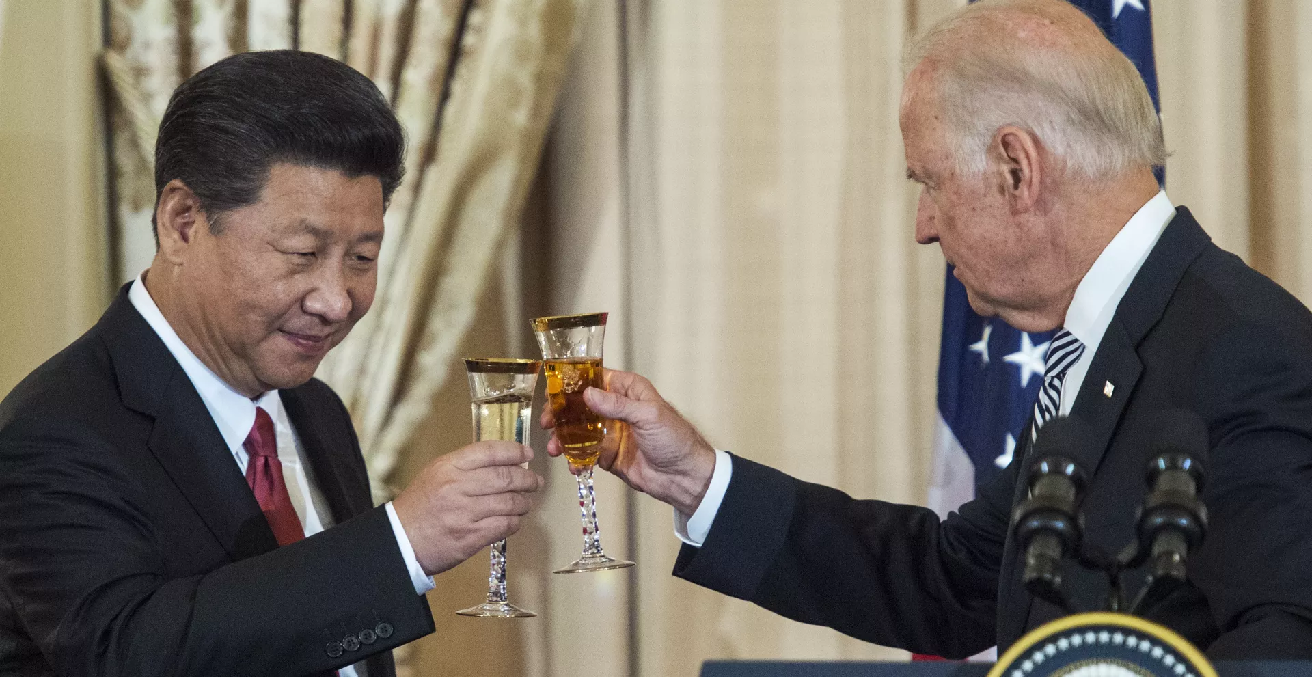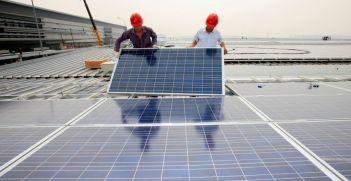RCEP: One Small Geo-Economic Step or a Giant Eastward Leap in Geostrategic Gravity?

The recently signed Regional Comprehensive Economic Partnership (RCEP) is Asian-centric. It is worth paying attention to how Western scholars and policymakers will position the deal.
To this point, few observers have acknowledged RCEP’s substance vis-a-vis the threadbare 2018 Comprehensive and Progressive Agreement for Trans-Pacific Partnership (TPP-11). Even fewer have accepted RCEP’s importance to 30 percent of the global population in a diverse mix of developed, developing, and least developed Asian economies. None seem to have analysed its broader geopolitical significance and prospective impacts on US-China trade tensions.
There is a need for international relations professionals to embrace the capacity of rising states to enhance the global order. RCEP, like other rising states’ initiatives, unsettles established international norms and challenges us to reimagine the prevailing preferentially Western international relations orthodoxy. As previously argued, what usually motivates rising state proposals is a need to redress their alienation from benefits available to Western status quo countries.
There are numerous significant implications of RCEP that illustrate why international relations scholars and policymakers should reconsider their indifference to this agreement. It highlights the merits of ASEAN’s nuanced regional diplomacy when juxtaposed to Western adversarial traditions. It also illustrates RCEP’s role in facilitating the globally significant China-Japan-South Korea trilateral free trade agreement. As well, it points to prospective sources of heightened Sino-American trade tensions that flow from RCEP’s new Asian free-trade community.
Few political leaders have acknowledged ASEAN’s role in proposing and finalising perhaps the most notable achievements in its 50-year history. RCEP was inaugurated in 2012 and its successful conclusion is testament to the “ASEAN Way” of nuanced regional intuitionalism. That process is characterised by principles of socialisation, quiet diplomacy, discreetness, consensus decision making, non-confrontational bargaining, and sovereign equality. Its hallmarks stand in contradistinction to the often culturally indifferent, adversarial, majoritarian, legalistic decision-making style of Western interlocutors.
Implementation of ASEAN principles is evident in small and large aspects of the RCEP agreement. Small, in its accommodation of preferential trade barrier reductions for least developed ASEAN economies. Large, it its achievement of a long-awaited Japan-China-South Korea free trade relationship. Above all, the agreement resolves the “noodle bowl” complexity of Asian trade relationships by immediately eliminating tariffs and quotas on 65 percent of goods traded within the bloc, increasing to 90 percent over time.
Significantly, RCEP enables the realisation of a long-desired Japan-China-South Korea trilateral free trade agreement. This is significant because Japan and China have a troubled history, while Japan and Korea are natural allies of the US. Nevertheless, the fact that these three major Asian nations have aligned at a time when the US is seeking to exclude and hamper China’s development indicates that the rest of the world has not turned protectionist. In fact, unilateral US trade policies and COVID-19 impacts have brought Asian economies closer as manufacturers seek stability in regional supply chains.
The Japan-China-South Korea trilateral free trade agreement enhances their already complimentary economies. China is the largest trading partner of both Japan and Korea, and in turn, China is a major trade partner to the other two. More broadly, RCEP will intensify trade and economic relations within regional East Asia because its free trade and simplified rules of origin provisions strengthen manufacturing, technology, natural, and human resource linkages across the region.
These agreement outcomes were not inevitable. As originally formulated, both TPP-11 and RCEP would have extended, not limited, the free trade agreement’s reach to Asia. Regrettably, the West’s interests were seriously disadvantaged, and broader geographic coverage was thwarted when nationalist leaders in the US and India withdrew from the agreement negotiations. That left both TPP-11 and RCEP as Asian-centric agreements.
It is pertinent to consider RCEP’s likely impacts on the Sino-American relationship. Available analysis indicates that East Asian interdependence will enhance China’s leadership in the region and make it the largest economic beneficiary of RCEP. RCEP’s liberal rules of origin provisions will strongly reorient supply chain partnerships to the East Asian free trade agreement region. In addition, US exporters to the region will be disadvantaged vis-à-vis Asian producers. Actions to reverse America’s protectionist stance and pursue entry to either RCEP or TPP-11 are unlikely while the current domestic political climate persists.
America’s unilateralism and Asian “decoupling” ambitions come at a time when China’s Asian Infrastructure Investment Bank and Belt and Road Initiatives provide China with the potential to determine cornerstone aspects of Asia’s future economic and technological architecture. Furthermore, opportunities for the West to moderate China’s advantage by recourse to the World Trade Organization (WTO) is also constrained by US actions that disabled the WTO’s appellate enforcement capabilities. In geo-economic terms, RCEP has clearly advantaged China and may well trigger more aggressive US trade, technology, or security actions designed to constrain China’s development.
On the other hand, China’s geo-economic assessment is probably far more positive. RCEP has consolidated China’s trade primacy in East and North Asia. In addition, benefits from the regional free-trade relationships will, in all probability, enhance China’s wide-ranging Belt and Road Initiatives across Central Asia and into Europe. To that cornucopia of opportunities can be added substantial trade and investment opportunities from the recent but rarely acknowledged and little understood African Continental Free Trade Agreement (AfCFTA). Details of that agreement are beyond the scope of this article, but inevitably, China’s extensive trade and investment interests in Africa will be enhanced when AfCFTA’s COVID-19-deferred commencement occurs in January 2021.
It may be that the coincident disarray in Western trade policy and finalisation of the Asian-centric Regional Economic Partnership Agreement marks the point at which the transition of geo-economic power moves decisively to Asia. Once accepted, that reality will require all states, but especially Washington and Beijing, to forge what Henry Kissinger calls a “strategically stable relationship.” Achieving that outcome will test Western diplomats’ capabilities, notwithstanding the ASEAN Way provides a demonstrably successful Asian negotiating methodology. Alternatively, the Australian Council of Academics endorse smart engagement with Asia through patient nurturing of long-term, sustainable, mutually beneficial relationships that are beyond the pursuit of purely transactional exchanges for short-term self-interested gain.
Alan McCormack BEc, MIR, MRes, PhD is an Honorary Postdoctoral Associate at Macquarie University.
This article is published under a Creative Commons Licence and may be republished with attribution.




